Join our community
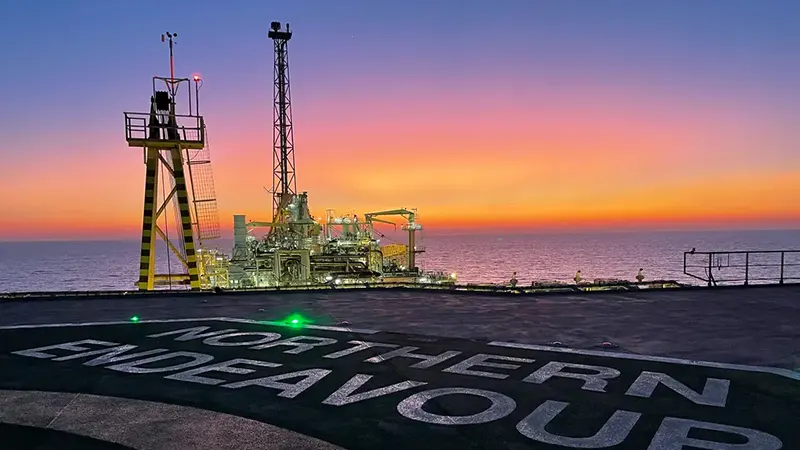
 One of the key players working on Australia’s flagship Northern Endeavour decommissioning programme has been taken over by a former American rival.
One of the key players working on Australia’s flagship Northern Endeavour decommissioning programme has been taken over by a former American rival.
US-based CB&I has entered into an agreement to acquire Petrofac’s Asset Solutions business after the parent company filed for administration in late 2025 due to financial distress from cost overruns and contract issues.
Petrofac was awarded its Northern Endeavour contract by the Australian government in April 2022, heralding the start of an era of decommissioning in the nation’s offshore oil and gas sector.
Petrofac’s Australia team, based in Perth, were contracted to complete Phase 1 of the decommissioning of the FPSO (Floating Production, Storage and Offtake) facility.
It is unclear at this point how the project will be affected, if at all, after the CB&I acquisition goes through, with approximately 3,000 Petrofac employees expected to join the Texas company at the close of the transaction, anticipated to occur in the first quarter of 2026.
According to Mark Butts, CB&I’s President and CEO, the acquisition will strengthen the group’s overall portfolio and enhance service capabilities.
He said it also supports CB&I’s diversification into integrated services, expands customer relationships and opens pathways for growth in international markets.
“Asset Solutions’ leadership demonstrates pride in operational excellence, commitment to customers, and resilience through challenging circumstances,” said Butts.
“Our organisations share similar management philosophies and industry-leading safety performance. With this combination we see strong cultural alignment, diversification benefits, and clear opportunities to enhance performance and deliver stable cash flow generation. These factors collectively support CB&I’s long-term growth objectives.”
Following the close of the transaction, CB&I will operate as one company with two global business units, CB&I Asset Solutions based in Aberdeen, Scotland, and CB&I’s existing operations, CB&I Storage Solutions, based in The Woodlands, Texas.
With thousands of jobs saved, it is hoped there will be minimal disruption to the Northern Endeavour work.
“We are excited about this opportunity to focus on our core strengths, reaffirm critical customer relationships, stabilise our supply base and deliver operational excellence for our current and future projects,” said John Pearson, Petrofac Asset Solutions Chief Operating Officer.
“We have the operational and engineering talent required to deliver high-value growth opportunities and expand differentiated services. Our cultural compatibility with CB&I enhances our integration and supports a smooth transition.”
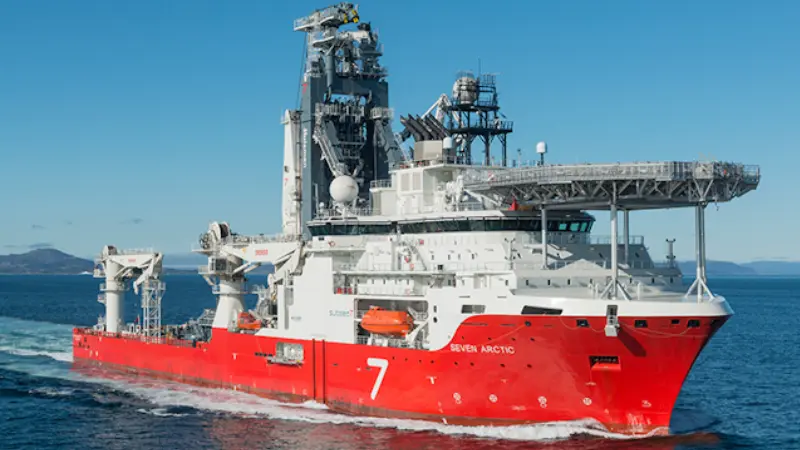
 Subsea7 has been awarded a contract with Chevron Australia for subsea installation on the Gorgon Stage 3 Project.
Subsea7 has been awarded a contract with Chevron Australia for subsea installation on the Gorgon Stage 3 Project.
Subsea7’s scope of work includes project management, engineering, procurement, fabrication, transportation, installation and pre-commissioning of subsea equipment and associated infrastructure at the project site, located at 1,350m water depth.
Project management and engineering work will commence immediately, with offshore operations expected to begin in 2028.
David Bertin, Senior Vice President for Subsea7 Global Projects Centre East, said, “This project marks an important milestone and reinforces our long-term strategic engagement with Chevron. Building on our local and international capability and experience, we look forward to working collaboratively with Chevron Australia – focusing on safety and quality to optimise reliability, technical integrity and offshore operations – to successfully deliver the Gorgon Stage 3 subsea installation.”
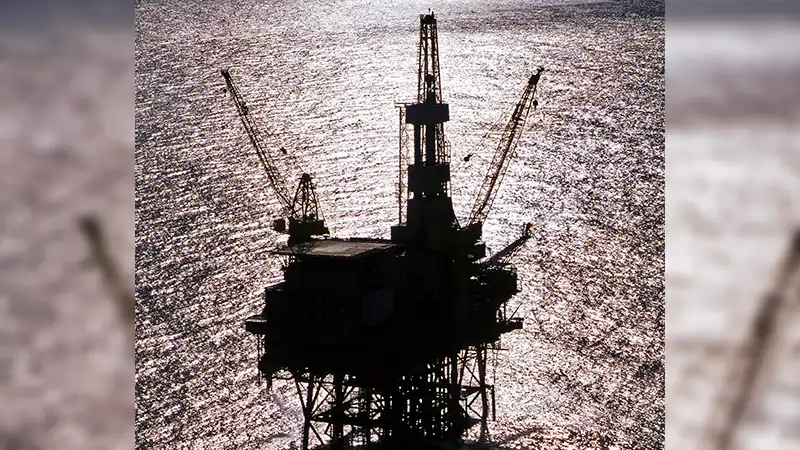
 ExxonMobil Australia Chair, Simon Younger, outlined the state of play in the company’s decommissioning efforts in the Gippsland Basin during a recent industry event.
ExxonMobil Australia Chair, Simon Younger, outlined the state of play in the company’s decommissioning efforts in the Gippsland Basin during a recent industry event.
He said the company is committed to “responsibly decommissioning” a number of offshore facilities that are no longer producing oil and gas, highlighting the global significance of the project off the coast of Victoria.
“You may be surprised to learn that Victoria is home to Australia’s largest decommissioning project, and ExxonMobil’s largest decommissioning project globally, a multi-year, multi-billion dollar programme of works,” he noted.
Younger was speaking at an event to mark ExxonMobil Australia’s 130 years in the country.
From humble beginnings as the Vacuum Oil Company (later known as Mobil Oil Australia) selling a barrel of cylinder oil to a Bendigo Goldmine from its Melbourne office back in 1895, 130 years later it has grown to become one of Australia’s most critical energy suppliers.
The event also celebrated 60 years of its membership to the Committee for Economic Development of Australia (CEDA), an independent, member-based public policy think tank.
“So far we’ve safely completed over $2.5 billion of early works across our offshore operations, including the permanent sealing of more than 200 wells,” said Younger.
All this work, he added, is in preparation for the arrival of the world’s largest construction vessel, the Allseas Pioneering Spirit, in 2027.
“This mammoth vessel, which is as long as almost 3 MCG fields laid end to end, will travel from Norway to start removal of the 12 retired offshore facilities in Bass Strait and deliver them to our Barry Beach Marine Terminal in Southeast Gippsland, where they will be safely dismantled and recycled.”
After that, the mega project entails a huge and coordinated recycling effort, he noted.
“We plan to maximise recycling of these facilities for a second life and minimise the number of materials processed as waste,” said Younger.
“In fact, our aim is to recycle more than 95% of the mostly steel material from our oil and gas structures. Most of the steel will either be sent offsite in trucks, or via ships for onward transportation to recycling facilities.”
At the same time, Younger noted that ExxonMobil Australia remains committed to supporting the reliable supply of gas from the Bass Strait into the 2030s.
Over the last decade, it has invested almost a billion dollars in the Gippsland Basin.
These investments include the Kipper 1B project, which started up last month, the Kipper Compression Project, and the West Barracouta project, which came online in 2021.
“And right now, in conjunction with our joint venture partner Woodside Energy, we are investing $350 million to develop the Turrum Phase 3 project, which will further bolster supplies of Gippsland gas to the east coast domestic market by 2027,” he said.
“Turrum Phase 3 will be one of the largest gas developments on the east coast and means our Gippsland operations are set to continue powering Australian homes and businesses well into the next decade.”

 Australia faces a major offshore oil and gas decommissioning challenge, with costs estimated at US$40.5bn over the next 50 years, covering more than 1,000 wells as well as related infrastructure.
Australia faces a major offshore oil and gas decommissioning challenge, with costs estimated at US$40.5bn over the next 50 years, covering more than 1,000 wells as well as related infrastructure.
This is estimated by the Centre of Decommissioning Australia (CODA) to involve the dismantling and disposal of topsides and substructures equivalent to 75 Eiffel towers.
Recent guidance issued by the UK’s Net Zero Technology Centre, in partnership with engineering consultancy Astrima, could help energy companies globally speed up the rollout of improved technologies for decommissioning oil and gas wells, thereby helping to cut costs as well as reducing the environmental impact of ageing energy assets.
The Aberdeen-based centre said the current pace of deployment “remains incredibly slow” as the scale of the challenge grows.
The first guidance is focused specifically on well plug and abandonment (P&A), given that well abandonment is one of the most costly aspects of decommissioning.
It sets out a clear, evidence-based process to assess whether materials can safely and permanently seal wells that are no longer in use. The six-step framework supports safe and confident use through a structured qualification process, helping users identify risks, build a strong evidence base, and streamline approvals to accelerate the safe deployment of new solutions.
Long-term safety and environmental protection are critical as the industry moves away from traditional cement-based barriers. New technologies using low melting point alloys, resins, polymers and epoxies are emerging, but face challenges demonstrating their effectiveness and reliability.
The framework incorporates input from operators, regulators and technology developers, and draws on international guidelines and standards such as DNV RP A203 and API RP 17Q, which are widely used across the energy sector.
Lewis Harper, Programme Manager at NZTC, said,“Well decommissioning is an increasingly urgent global issue as maturing basins seek ways to cut costs, reduce emissions and improve efficiency. The only way to achieve that is through new technology, but the pace of developing and deploying new solutions remains incredibly slow.
“This guidance will help speed up the safe adoption of innovative technologies, giving operators and regulators the confidence to move faster. By managing performance to stringent standards, the adoption of new materials should become easier and more reliable. This framework gives the industry the tools to tackle well decommissioning challenges with greater confidence.”

 Pentarch Offshore Solutions, which provides marine logistics for offshore energy, heavy industry and decommissioning, is bolstering its bunkering capabilities.
Pentarch Offshore Solutions, which provides marine logistics for offshore energy, heavy industry and decommissioning, is bolstering its bunkering capabilities.
The company, a partner of the Centre of Decommissioning Australia (Coda), has signed a Memorandum of Understanding (MoU) with Integr8 Fuels to help meet growing Australian maritime refuelling needs at the Port of Edrom, Eden, New South Wales (NSW).
The agreement marks a key step in enhancing bunker fuel provision and operational support for expanding offshore energy, maritime, and defence activities in the region, according to William Kanavan, Managing Director of Pentarch Offshore Solutions.
“The signing of this MOU marks a significant milestone for Pentarch Offshore Solutions, firmly positioning our region on the global map as a growing hub for marine and offshore energy operations,” said Kanavan.
“Our developing partnership with a world-leading fuel provider like Integr8 Fuels demonstrates the scale of opportunity this regional port can deliver – for industry, and for Australia.”
The collaboration means the two partners, alongside regional stakeholders, will be contributing to the ongoing transformation of the Port of Edrom into a multi-functional marine and energy terminal.
The MOU builds on existing fuel supply commitments to a range of Australian and international marine contractors, including allied defence and naval refuelling operations.
“This partnership strengthens Integr8 Fuels’ presence in the Australian market, demonstrating our commitment to supporting critical marine and offshore operations,” said Christopher Seidel, Integr8 Fuels’ Business Manager.
“We look forward to collaborating with Pentarch Offshore Solutions and contributing to the growth and capability of the Port of Edrom and the Far South Coast community of New South Wales.”
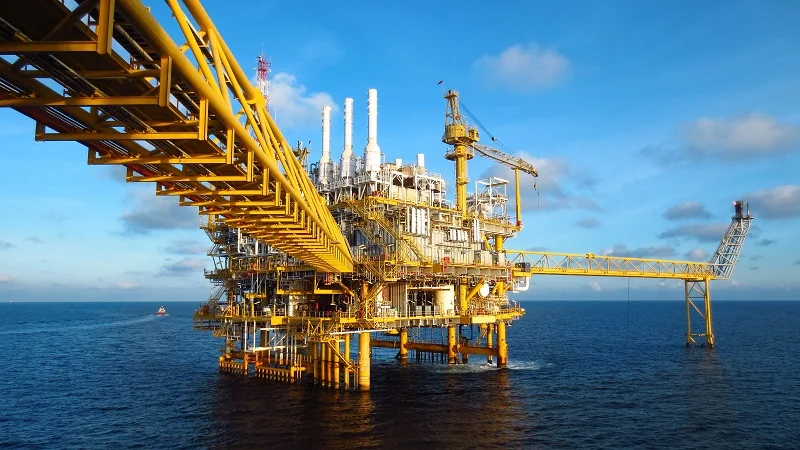
 The Australian Government Department of Industry, Science and Resources has published a consultation paper seeking feedback on reforms to decommissioning and financial assurance arrangements for the offshore oil and gas industry
The Australian Government Department of Industry, Science and Resources has published a consultation paper seeking feedback on reforms to decommissioning and financial assurance arrangements for the offshore oil and gas industry
Australia has up to US$60bn of offshore oil and gas decommissioning activities expected to occur over the next 30 to 50 years. Previous reforms have strengthened the offshore petroleum decommissioning regulatory framework. However, there are aspects that may require further reform to ensure industry is undertaking timely, safe and environmentally responsible decommissioning.
While the paper focuses mainly on oil and gas projects, it is also seeking input on the regulatory regime for decommissioning carbon capture and storage projects.
The proposed reforms aim to strengthen the decommissioning framework so industry:
• decommissions in a timely, safe and environmentally responsible way
• remains responsible for the risks and liabilities of offshore activities.
The consultation paper invites feedback on:
• the existing decommissioning framework in Australia
• lessons from international and onshore frameworks
• proposed areas for reform, including:
• decommissioning planning
• financial planning and assurance
• decommissioning and financial capacity risk assessments
• compliance and enforcement tools
• title surrender.
Feedback to the consultation paper is now open and will close on 13 January 2026. Feedback to this consultation will help the government develop these reforms and may also inform related activities.
There will be future public consultation informed by the responses to this paper, and the government will also consult on any legislative changes.
To read the consultation paper and provide feedback please visit www.consult.industry.gov.au.
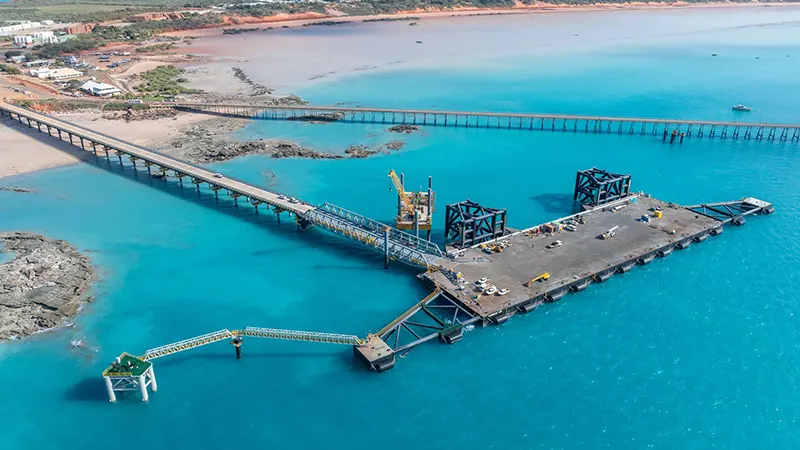
 Kimberley Marine Support Base (KMSB), a new purpose-built floating wharf in Broome, is looking to aid Western Australia’s (WA) oil and gas decommissioning efforts.
Kimberley Marine Support Base (KMSB), a new purpose-built floating wharf in Broome, is looking to aid Western Australia’s (WA) oil and gas decommissioning efforts.
The facility enables 24/7 operations independent of tides, a significant advantage in northern Australia, where tidal windows can create unpredictable delays and added costs.
KMSB marks another significant private investment in the state’s critical port infrastructure steered by Founder and Managing Director Andrew Natta — building on the successful model he established at the existing Onslow Marine Support Base (OMSB) in the Pilbara region of WA.
OMSB is an industry partner of the Centre of Decommissioning Australia (CODA), which highlighted the new project in its recent newsletter.
The new facility boasts a 300-metre berth and heavy-lift capability, and is designed to accommodate breakbulk and project cargo up to 600 tonnes, as well as roll-on roll-off (RoRo) equipment for the resource and defence sectors, and containerised freight, critical minerals, renewable energy infrastructure and decommissioning equipment.
The KMSB facility is designed to operate as a complementary terminal to the Port of Broome, which has served as the region’s main maritime logistics hub for more than 80 years.
Australia’s northwest has long grappled with infrastructure bottlenecks, such as vessels waiting on tides, delayed project cargo, and escalating costs from demurrage and congestion —operational constraints that all carry economic implications.
Broome, in particular, has been a critical hub supporting offshore oil and gas, community resupply, defence readiness and emerging renewable energy projects.
Yet, despite this strategic importance, limitations in port infrastructure have repeatedly challenged shipping schedules and project timelines.
“Our floating wharf at KMSB is designed for ‘non-tide dependant’ operations – removing the bottlenecks that have long-plagued supply chains within the region,” said Natta.
He said KMSB will boost productivity, safety and reduce costs for established Kimberley businesses in the agricultural and resources sectors, while also allowing cruise ships to come alongside for passengers to visit Broome without the need to wait for appropriate tides.
Crucially, the facility will also enable the growth of new sectors – such as proposed critical minerals and renewable energy developments – by providing the necessary infrastructure for handling specialised cargo like wind turbines, solar systems and commercial battery imports.
“Our 24/7 operational capability, combined with our flexible, client-focused approach, means businesses can now plan with confidence, operate cost effectively and significantly improve their supply chain efficiency.”

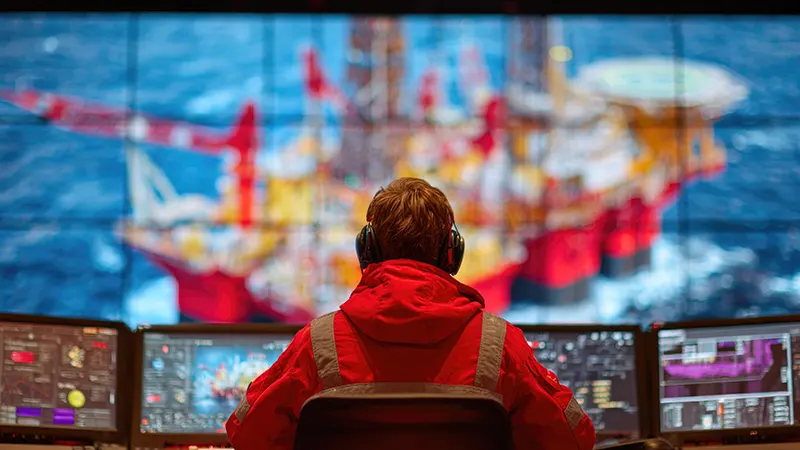
Improved efficiencies and experience may help to ease the cost of decommissioning Australia’s ageing offshore oil and gas infrastructure, a new report suggests.
The Department of Industry, Science, and Resources recently commissioned consultancy, Xodus Group, to explore the nation's overall decommissioning liabilities.
The report — Australian Offshore Oil & Gas Decommissioning Liability Estimate 2025 — estimates the industry will spend A$43.6bn through to 2070, rising to A$66.8bn when factoring in inflation.
This includes all fixed and floating facilities, rigid and flexible lines, subsea infrastructure and wells.
It added that around 55% of the decommissioning spend will occur before 2040, with 61% of the liability focused on Western Australia, 23% in Victoria and 16% off the Northern Territory.
The decommissioning of wells represents the single largest portion of the decommissioning liability, with an estimated cost of A$17.9bn, the report added, followed closely by pipeline decommissioning, with an estimated liability of A$17.85bn.
The report noted that decommissioning practice and technology have already improved since 2020, a trend that could continue, yielding benefits along the way.
There is an opportunity for further improvements in efficiency, it added, through operator cooperation when decommissioning, in addition to further technological advances and industry investment in onshore disposal and recycling.
“Possible cost reductions primarily relate to the opportunity for efficiencies, technological development and future infrastructure investments,” it stated.
These include:
Single and multiple operator campaigns to distribute the costs of equipment and vessels across multiple assets.
A dedicated disposal yard for deconstruction and cleaning.
Domestic steel recycling to reduce the amount of steel which is exported for recycling.
Aligning decommissioning campaigns with offshore wind construction to reduce vessel mobilisation rates.
Implementing new technologies and/or engineering practices to ensure that the most appropriate and efficient methodology, vessels, and equipment are used to perform decommissioning activities. Here, it cites the example of changes in the commonly accepted removal methodologies for certain infrastructure types.For example, reverse s-lay was previously considered the only methodology for recovery of pipelines — however, cut and lift now remains the most accepted method for pipeline removal.
Other findings in the report highlight the sheer magnitude of the task now facing contractors and operators across the board, with at least 2.7 million tonnes of infrastructure set to be removed, including a large portion of steel, with huge potential for local recycling.
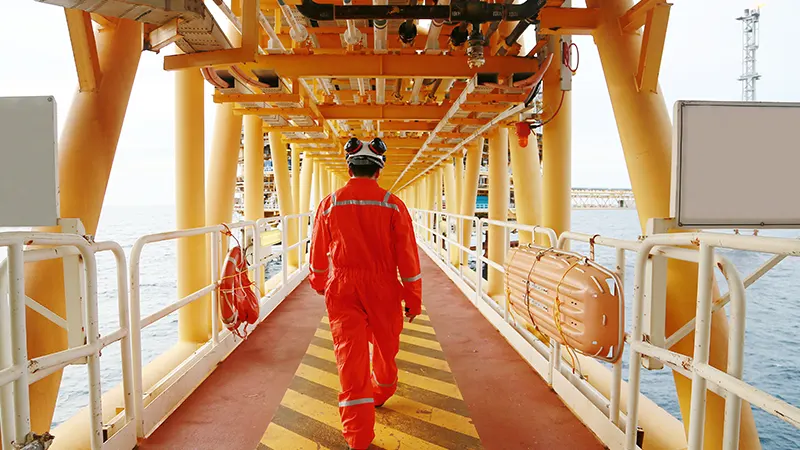
 The Institute for Energy Economics and Financial Analysis (IEEFA) has published its responses to the Victorian Legislative Council Environment and Planning Committee and its inquiry into the decommissioning of oil and gas infrastructure.
The Institute for Energy Economics and Financial Analysis (IEEFA) has published its responses to the Victorian Legislative Council Environment and Planning Committee and its inquiry into the decommissioning of oil and gas infrastructure.
IEEFA is an independent energy finance think tank that examines issues related to energy markets, trends and policies.
The Institute’s mission is to accelerate the transition to a diverse, sustainable and profitable energy economy.
In a statement published on its website, IEEFA noted that Victoria is in a “unique position” to establish a decommissioning industry, given the state has some of the oldest oil and gas extraction infrastructure in Australia “and therefore has a greater proportion of its property and equipment ready for decommissioning.”
It also called on the Victorian government to ensure decommissioning work is undertaken in an orderly and transparent manner.
“This will help to keep cost downs and provide opportunities for the state’s oil and gas workforce and contractors to move into the next phase of oil and gas lifecycle, decommissioning.
Victoria’s decommissioning asset profile includes 22 platforms, over 2,000 km of pipelines and umbilicals, as well as around 460 wells to be plugged and abandoned, according to the National Offshore Petroleum Safety and Environmental Management Authority (Nopsema).
The infrastructure earmarked for decommissioning offshore Victoria is owned and operated by a handful of companies.
Historically, the largest oil and gas producing complex is the Gippsland Basin Joint Venture (GBJV), also known as the Bass Strait project. This year, Woodside took over as operator of the venture from ExxonMobil, which had operated the project since 1969.
Other companies with decommissioning liabilities offshore Victoria include Beach Energy and Amplitude Energy.

 In an article on the ASCO website, John Davidson, Operations Manager – Environmental Services, ASCO discusses how the UK’s experience of building a system to deal with Naturally Occurring Radioactive Material (NORM) can benefit Australia.
In an article on the ASCO website, John Davidson, Operations Manager – Environmental Services, ASCO discusses how the UK’s experience of building a system to deal with Naturally Occurring Radioactive Material (NORM) can benefit Australia.
Davidson points out that as Australia faces a massive decommissioning wave, dealing with NORM will be one of the challenges it will need to address. This residue, which builds up in pipework, tanks and separators over years of oil and gas production, carries radiological risks and requires expert handling, treatment and disposal.
In the UK, the oil and gas sector has been dealing with NORM for decades, although the early years were challenging, he notes. “But through trial and error, the UK built a system that now works,” he says.
“NORM processing was centralised. Long-distance, highly regulated transport systems were developed. Experienced specialists were embedded into local teams. Most importantly, collaboration gradually replaced competition. Today, the UK has one of the most mature decommissioning supply chains in the world.”
Australia has a chance to avoiding years of inefficiency and unnecessary cost by learning lessons from the UK experience, he suggests. ASCO, which has built and operated one of the world’s most advanced NORM facilities in the North Sea, can now transfer that knowledge directly into Australia.
He goes on to suggest that a logistics strategy to deal with the long distances of offshore assets from disposal sites needs to be put in place; the expertise of experienced specialists should be leveraged at an early stage; and collaboration between companies should be encouraged, with shared infrastructure, expertise and logistics creating efficiencies and helping to address gaps in local capabilities.
On the questions of regulation, he notes that UK authorities engaged closely with industry to co-develop standards and best practice. “The UK’s lesson is clear: proactive engagement builds trust, accelerates approvals and avoids gridlock.”
“If Australia can absorb the lessons above now, rather than repeat the UK’s early missteps, it has the opportunity to build one of the world’s most resilient and effective decommissioning supply chains,” he concludes.
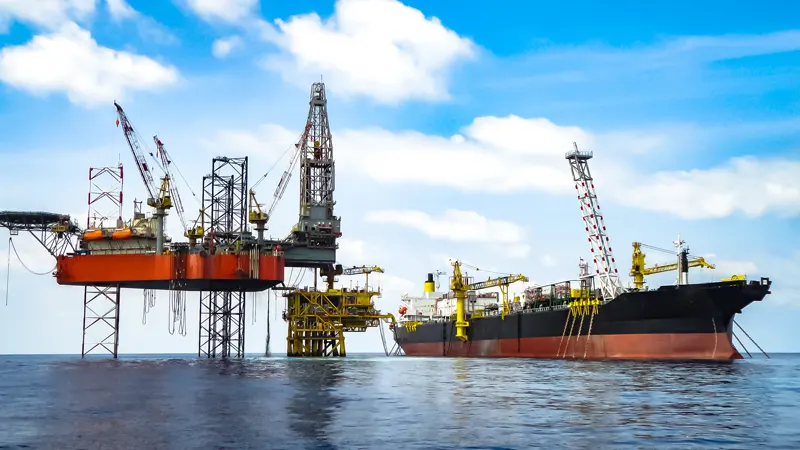
 The closing date is fast approaching for the submission of bids to deliver Phase 2 of Australia's Northern Endeavour decommissioning programme.
The closing date is fast approaching for the submission of bids to deliver Phase 2 of Australia's Northern Endeavour decommissioning programme.
Lead contractor bids must be submitted by 1 December 2025 on the AusTender platform. The Phase 2 RFT document provides essential guidance for preparing a compliant and completed tender response.
The Northern Endeavour is a 274 m long floating production, storage and offloading (FPSO) facility. It was permanently moored between the Laminaria and Corallina oil fields, about 550 km northwest of Darwin in the Timor Sea. Following liquidation of the former private owner, the Commonwealth now owns the Northern Endeavour FPSO. The Australian government is now decommissioning, disconnecting and disposing of the FPSO and remediating the Laminaria-Corallina oilfields.
The decommissioning programme is being managed in three phases.
Phase 2 of the Northern Endeavour programme includes permanently plugging and abandoning nine wells in the Laminaria and Corallina oil fields in a planned two-stage process. Stage 1 will involve project management, engineering, logistics, regulatory approval, subcontracting and procurement activities to: design and plan to permanently plug and abandon the wells; develop a Stage Gate Review Pack outlining a pricing model with detailed budget, risk profile and Performance Management Framework; and achieve Registered Operator status and monitor and maintain the Laminaria Corallina oil fields.
Stage 2 will include: permanently plugging and abandoning the wells; project management, engineering, procurement and field monitoring; meeting all regulatory requirements, including a National Offshore Petroleum Safety and Environmental Management Authority (NOPSEMA) approved Safety Case.
Phase 1 of the Northern Endeavour decommissioning project is progressing well. With the help of Petrofac, the lead contractor for Phase 1, the FPSO has been disconnected and towed to Singapore. While in Singapore, the vessel will undergo further work to remove protrusions and strengthen and repaint the hull for its journey to Denmark for recycling.
Phase 3 will involve removing subsea infrastructure and remediating the Laminaria and Corallina fields.
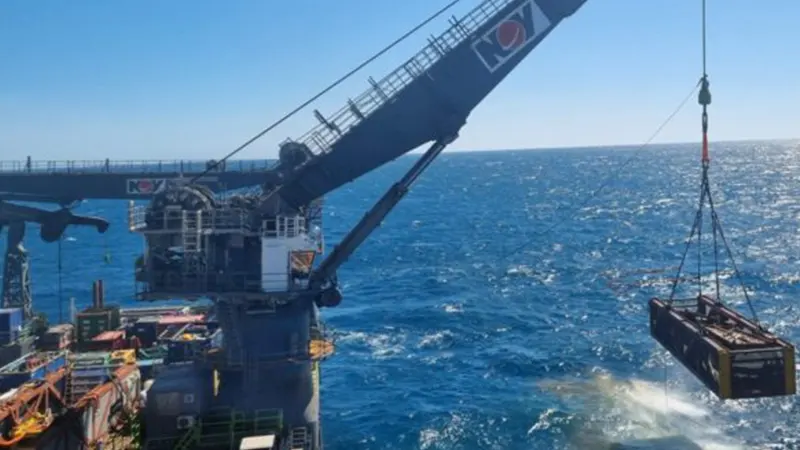
 Australia’s Strake Engineering has expanded its offshore equipment offering with the addition of four DNV-certified subsea baskets, purpose-built to support installation and recovery tasks across decommissioning and broader offshore operations.
Australia’s Strake Engineering has expanded its offshore equipment offering with the addition of four DNV-certified subsea baskets, purpose-built to support installation and recovery tasks across decommissioning and broader offshore operations.
Each basket offers a 53-tonne payload and 47-tonne tare weight, complete with rigging, load test certification, and manufacturer data records.
The units have already demonstrated “proven offshore performance” on a recent decommissioning project, it was reported by the Centre of Decommissioning Australia (CODA), which announced the new equipment launch on its website.
The Perth-based company is a CODA partner as Australia gets to grips with its immense offshore decommissioning challenges.
The new subsea baskets are designed to enhance safety, boost operational efficiency and reduce project costs through a flexible rental model.
“Strake is proud to introduce its fleet of subsea baskets for rent, delivering a safer, smarter, and highly efficient solution for offshore installation and recovery tasks,” the company noted in its marketing of the new equipment, also available on the CODA website.
According to Strake, the purpose-built equipment enhances safety by mitigating the risk of unknown structural integrity in offshore recovery; boosts efficiency by streamlining workflows and reducing project timelines with optimised handling and transport; and reduces costs, via a rental model that offers access to top-tier equipment without the capital expenditure of ownership.
Page 1 of 13
Copyright © 2025 Offshore Network